PRB Projects 2050 World Population at 9.8 Billion,
Youth Population to Reach 1.4 Billion
The world population will reach 9.8 billion in 2050, up 31 percent from an estimated 7.5 billion now, according to projections included in the 2017 World Population Data Sheet from the Population Reference Bureau (PRB).
This edition of the annual Data Sheet, also shows a worldwide total fertility rate (TFR, or average lifetime births per woman) of 2.5. The three countries with the highest TFRs are Niger (7.3), Chad (6.4), and Somalia (6.4), while there is a five-way tie for the lowest TFR (1.2) among Bosnia-Herzegovina, Romania, Singapore, South Korea, and Taiwan.
PRB’s 2050 projections show Africa’s population will more than double to 2.6 billion by 2050 and account for more than half (57 percent) of the global population increase by that date. The number of people in Asia will rise about 750 million to 5.2 billion, while Europe (including all of Russia) is headed for a population decline from 745 million to 736 million. The Americas population is seen increasing to 1.2 billion from 1 billion now, and Oceania (which includes Australia and New Zealand) would rise from 42 million to 63 million.
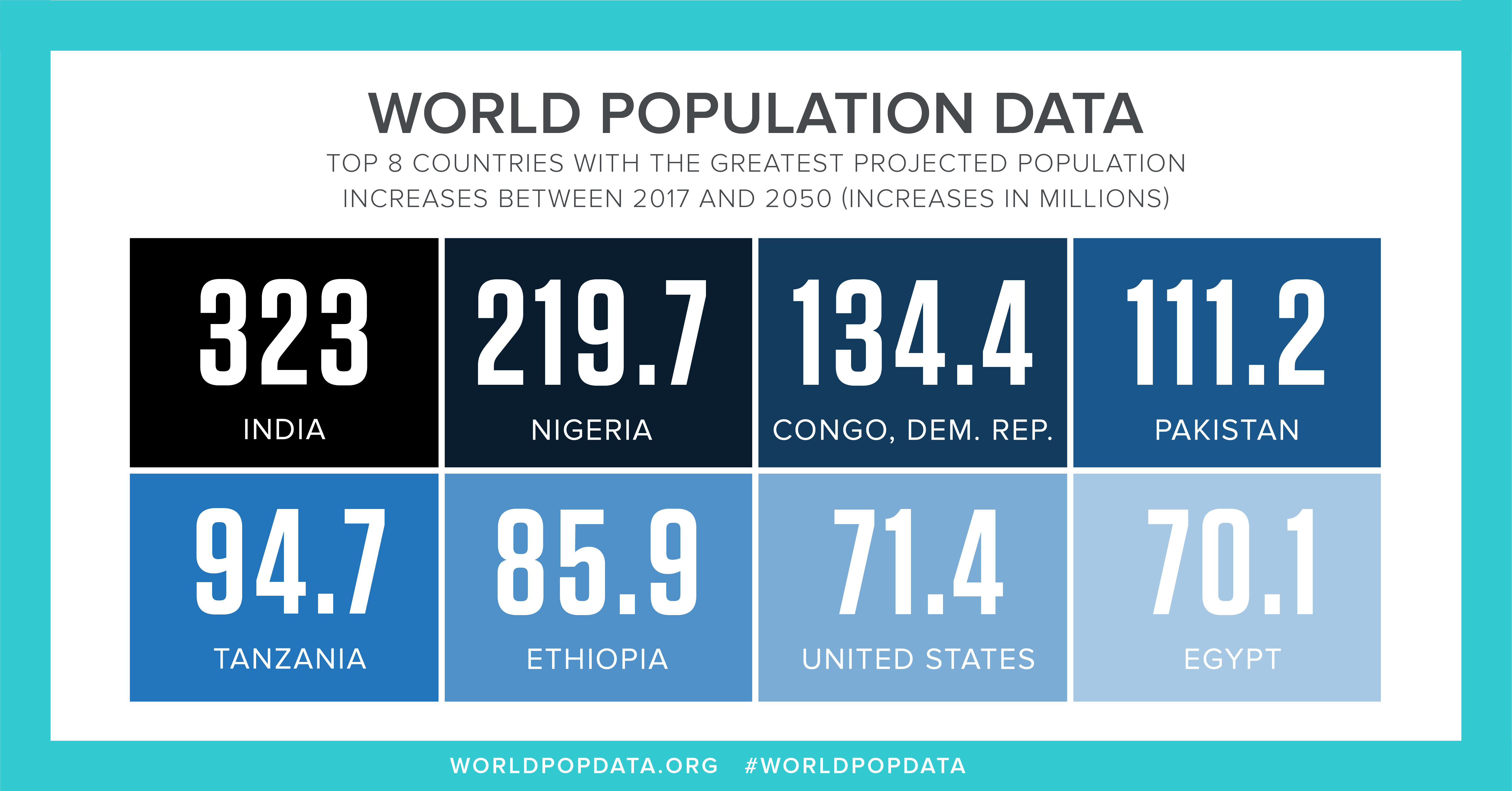
PRB’s widely referenced Data Sheet has been produced annually since 1962. This year’s edition provides the latest data on 17 key population, health, and environment indicators for the world, major regions, and more than 200 countries. This Data Sheet’syouth focus features nine special indicators and several analytical graphics exploring the state of the world’s youth, defined as people ages 15 to 24.
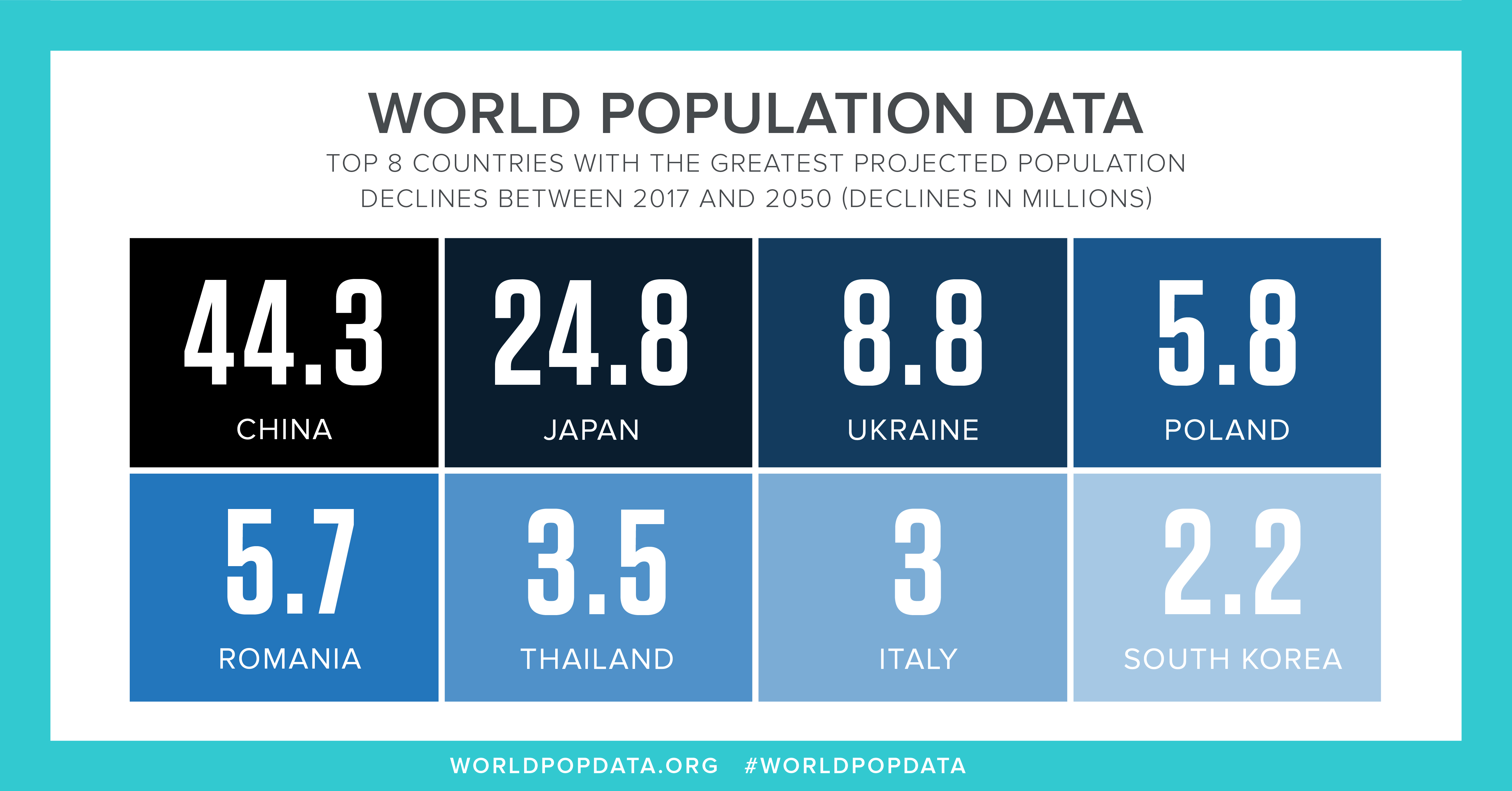
The Data Sheet’s midcentury population projections indicate that:
- India will become the world’s most populous country with 1.7 billion people, with China in second place at 1.3 billion. Currently China is at 1.39 billion, compared with 1.35 billion in India.
- India will also register the largest numerical increase in population of any country, adding 323 million people by 2050. Nigeria will post the second-largest rise at 220 million, followed by Democratic Republic of Congo at 134 million.
- Thirty-nine countries will have smaller populations in 2050 than in 2017. China will register the largest numerical population decrease of 44 million, followed by Japan at 25 million and Ukraine at 9 million.
- The population of 30 countries, nearly all in Africa, will at least double by 2050.
- The population of the United States will be 397 million, up from 325 million today.
Can Youth Develop Their Potential?
PRB compiled statistics to measure whether youth are well-positioned to develop into productive adults, based on health, education, and other factors. The Data Sheet includes indicators for secondary and tertiary school enrollment, adolescent fertility rates, rates of HIV/AIDS among youth, youth population figures for 2017, and youth population projections for 2050. A few key figures are:
- The world youth population (ages 15 to 24) is projected to rise to 1.4 billion in 2050 from 1.2 billion now but the youth share of world population will fall to 14 percent from 16 percent.
- Africa’s youth population will rise to 35 percent of the world youth total in 2050, from 20 percent today.
- Ethiopia currently has the highest share of youth population at 21.8 percent while Bulgaria has the lowest share at 9.1 percent.
- The global adolescent fertility rate (ages 15 to 19) is 50 births per 1,000 women, compared to only 16 per 1,000 in more-developed countries and 54 per 1,000 in less-developed countries.
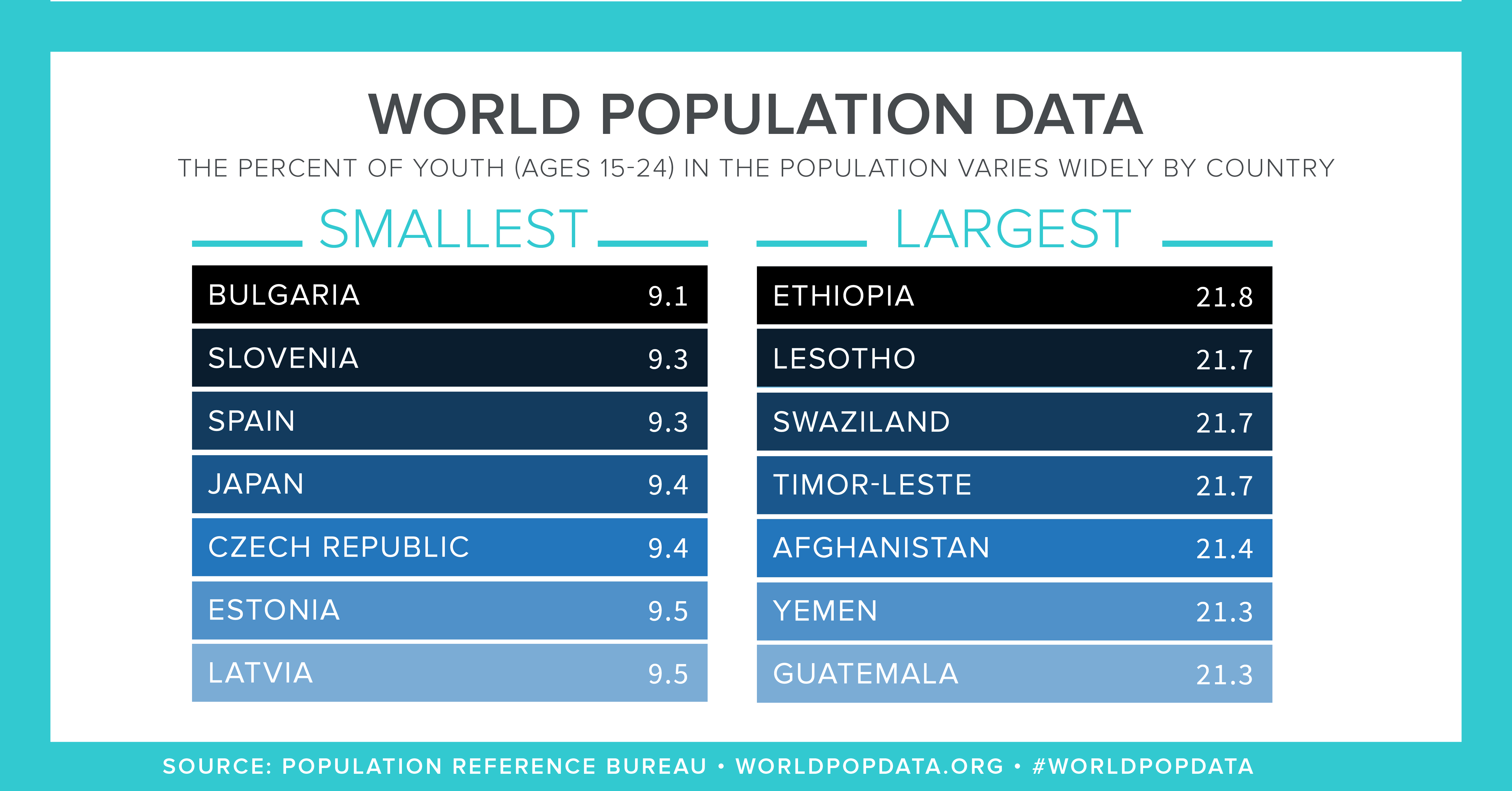
The analytical features focusing on youth explore the extent to which youth are engaged in productive activities (such as education, employment, or training) in the United States and globally, the prevalence of modern family planning use among young married women, HIV/AIDS rates among African youth, the prevalence of behaviors among youth that can lead to noncommunicable diseases, and in the digital edition, level of access by youth to information and communication technologies.
Download: 2016 World Population Data Sheet (PDF: 4.12 MB)
Teach: Data Sheet Lesson Plan
Interactive: 2016 Interactive Map
PRB Projects World Population Rising 33 Percent by 2050 to Nearly 10 Billion
The world population will reach 9.9 billion in 2050, up 33 percent from an estimated 7.4 billion now, according to projections included in the 2016 World Population Data Sheet from the Population Reference Bureau (PRB).
The world population would hit the 10 billion mark in 2053 if the assumptions underlying PRB’s 2050 projections are applied to subsequent years.
“Despite declines in fertility rates around the world, we expect population gains to remain strong enough to take us toward a global population of 10 billion,” said Jeffrey Jordan, president and CEO of PRB. “Significant regional differences remain, though. For example very low birth rates in Europe will mean population declines there while Africa’s population is expected to double.”
PRB’s projections show Africa’s population will reach 2.5 billion by 2050, while the number of people in the Americas will rise by only 223 million to 1.2 billion. Asia will gain about 900 million to 5.3 billion, while Europe registers a decline from 740 million to 728 million. Oceania (which includes Australia and New Zealand) would rise from 40 million to 66 million.
PRB’s widely referenced World Population Data Sheet has been produced annually since 1962. This year’s edition provides the latest data on 19 key population, health, and environment indicators for the world, major regions, and more than 200 countries. PRB also added six indicators and analytical graphics that explore the balance between providing for human needs and sustainably managing the natural resources on which people depend.
The Data Sheet’s midcentury population projections indicate that:
- The combined population of the world’s least developed countries in the world will double by 2050 to 1.9 billion. There are 48 least developed countries, based on United Nations criteria, most of which are in Africa.
- The population in 29 countries will more than double. Nearly all of these countries are in Africa.
- Forty-two countries will register population declines. These countries are scattered throughout Asia, Latin America, and Europe. Some European countries will post significant declines, such as Romania, which is projected to have a population of 14 million in 2050, down from 20 million today.
- The population of the United States will be 398 million, up 23 percent from 324 million today.
According to the Data Sheet’s estimates of current population:
- Over 25 percent of the world’s population is less than 15 years old. The figure is 41 percent in least developed countries and 16 percent in more developed countries.
- Japan has the oldest population profile, with over a quarter of its citizens older than 65. Qatar and the United Arab Emirates are at the other end of the spectrum, with each having only 1 percent over 65.
- The top 10 fertility rates in the world are in sub-Saharan African countries, with nearly all above six children per woman, and one topping seven. In Europe, the average is 1.6.
- The fertility rate in the United States is 1.8 children per woman, down from 1.9 in 2014. “Replacement” fertility in the United States—that is, the rate at which the population exactly replaces itself from one generation to the next, excluding the effects of migration—is 2.1 children per woman.
- Thirty-three countries in Europe and Asia already have more people over age 65 than under 15.
Human Needs, Sustainable Resources
As part of this year’s Data Sheet theme, “Human Needs and Sustainable Resources,” PRB compiled statistics that speak to the environmental and resource aspects of human development. The Data Sheet included measures of carbon emissions (related to climate change), access to electricity, power from renewable energy resources, how much land countries have set aside for protection, and population per square kilometer of arable land. A few key figures include:
- Globally, there was a 60 percent increase in annual carbon emissions between 1992 and 2013, to 9.8 billion metric tons. China posted the largest increase by volume over this period, from 735 million metric tons to 2.8 billion metric tons—which was also the largest amount of any country in 2013.
- Forty-three countries reduced their carbon emissions over the same period. The largest reduction by volume was in Ukraine, where carbon emissions declined by 98 million metric tons to 74 million tons.
- Eighteen percent of the world’s energy comes from renewable sources, which include hydroelectric power.
- There is an average of 526 people per square kilometer of arable land. The number is 238 in more developed countries and 697 in less developed countries.
2014 World Population Highlights
Narrated by Jeff Jordan, PRB’s president, this short video illustrates the 2014 World Population Data Sheet’s main findings about world population, infant and maternal health, poverty, and the environment.
2014 World Population Data Sheet







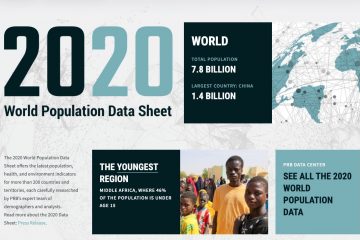

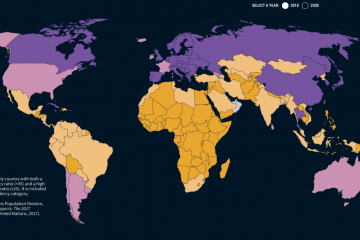
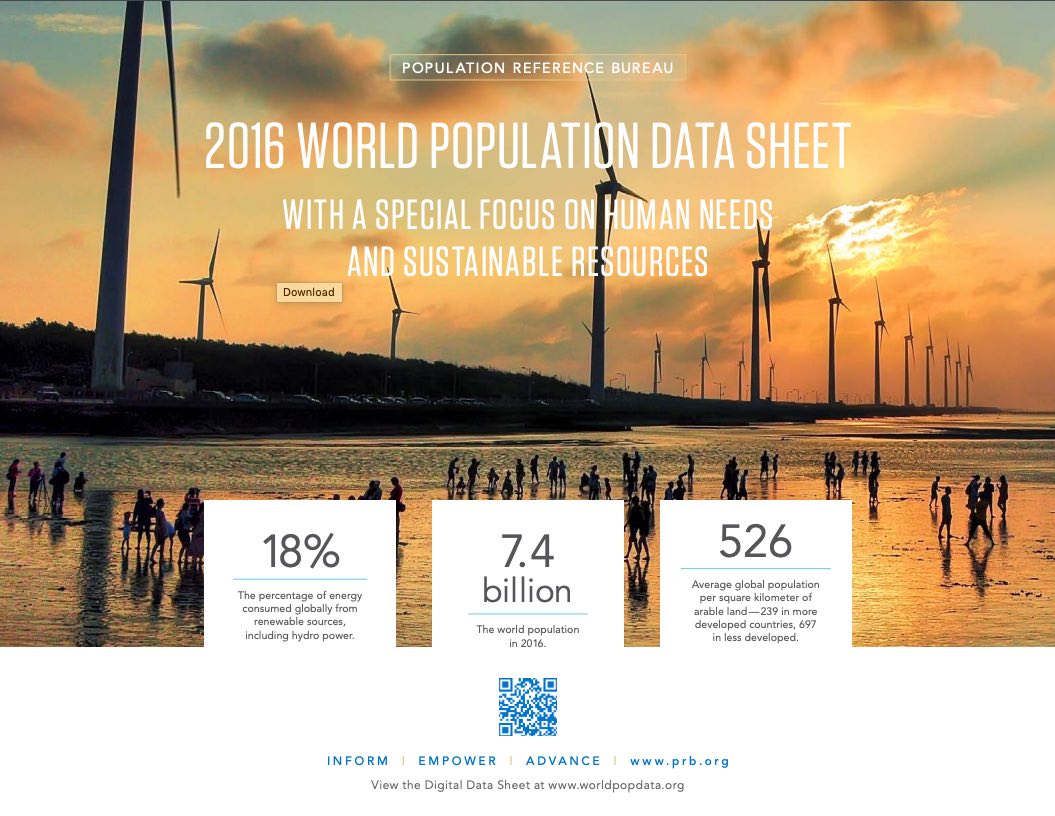 ">
"> ">
">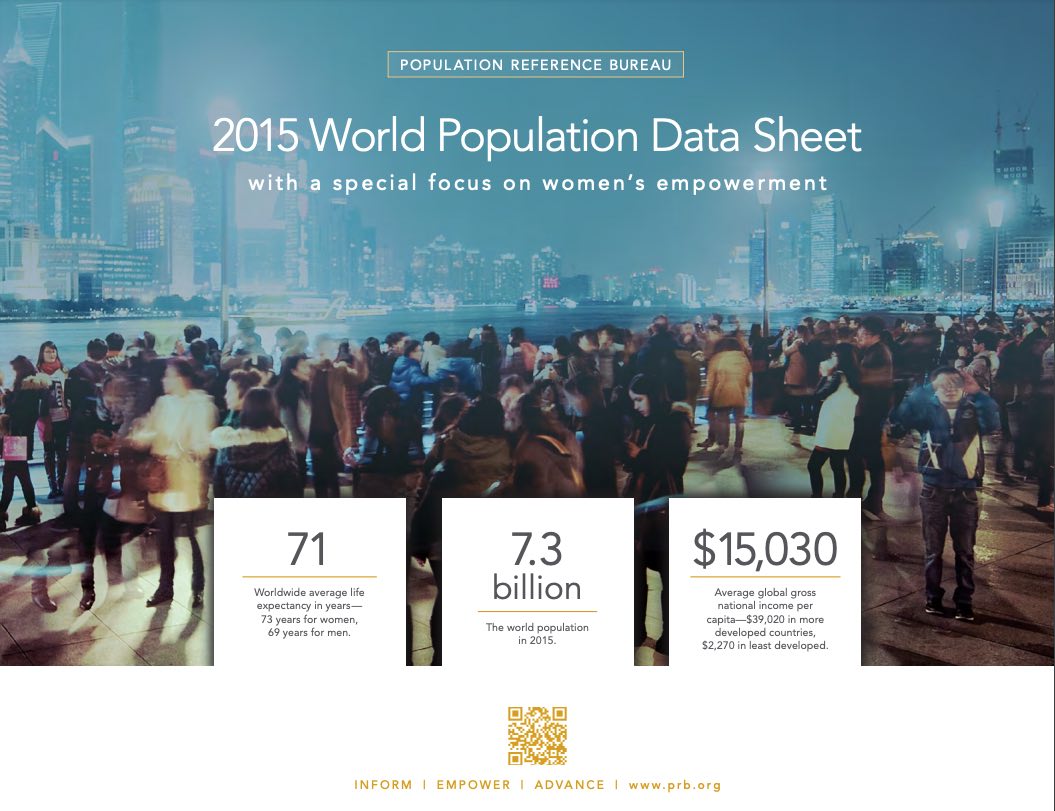 ">
">
 ">
">

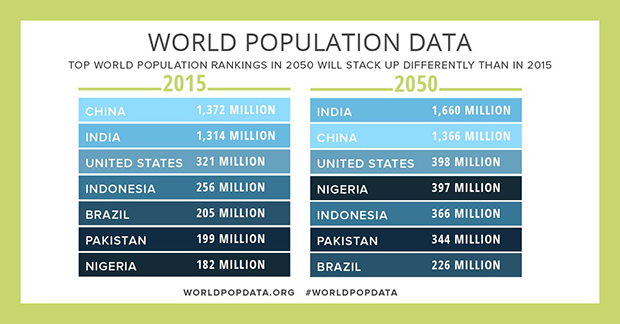
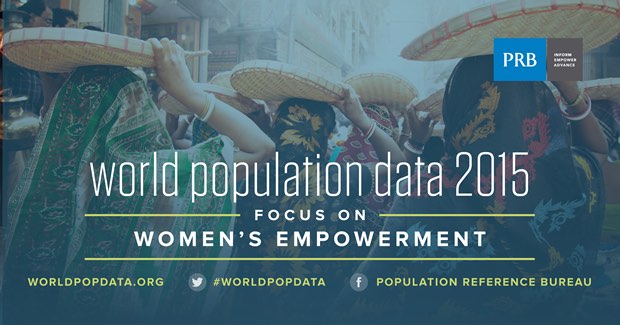 ">
">
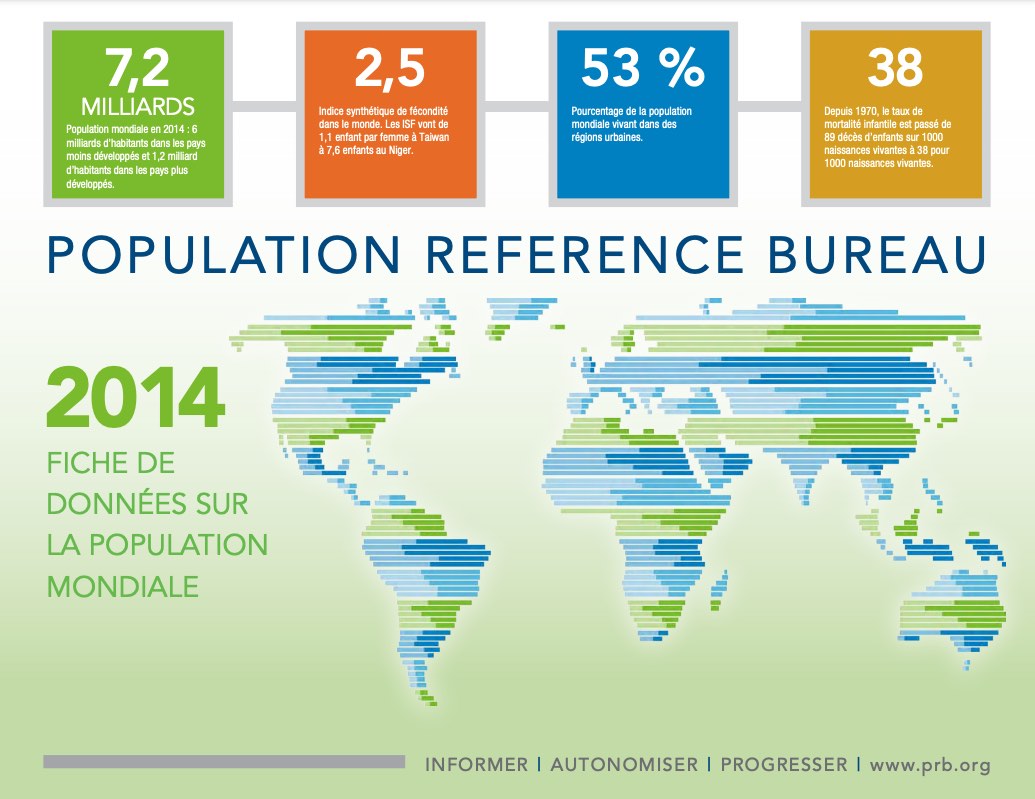 ">
">
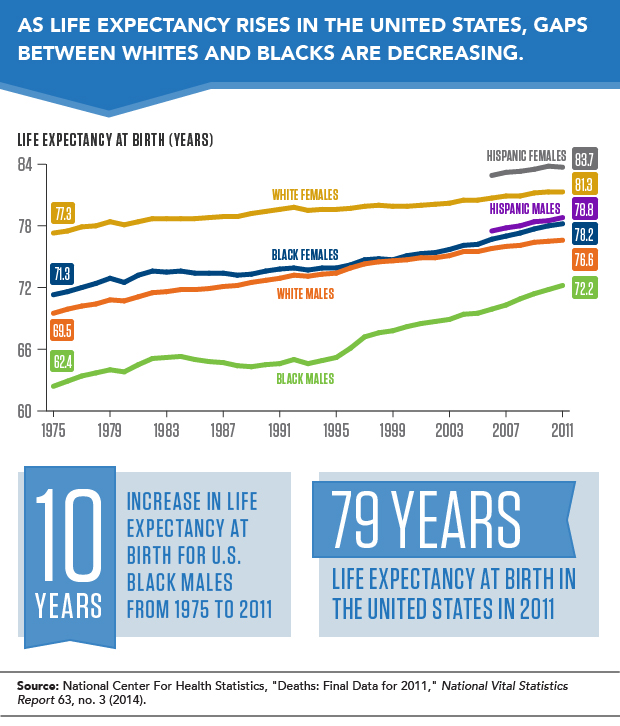
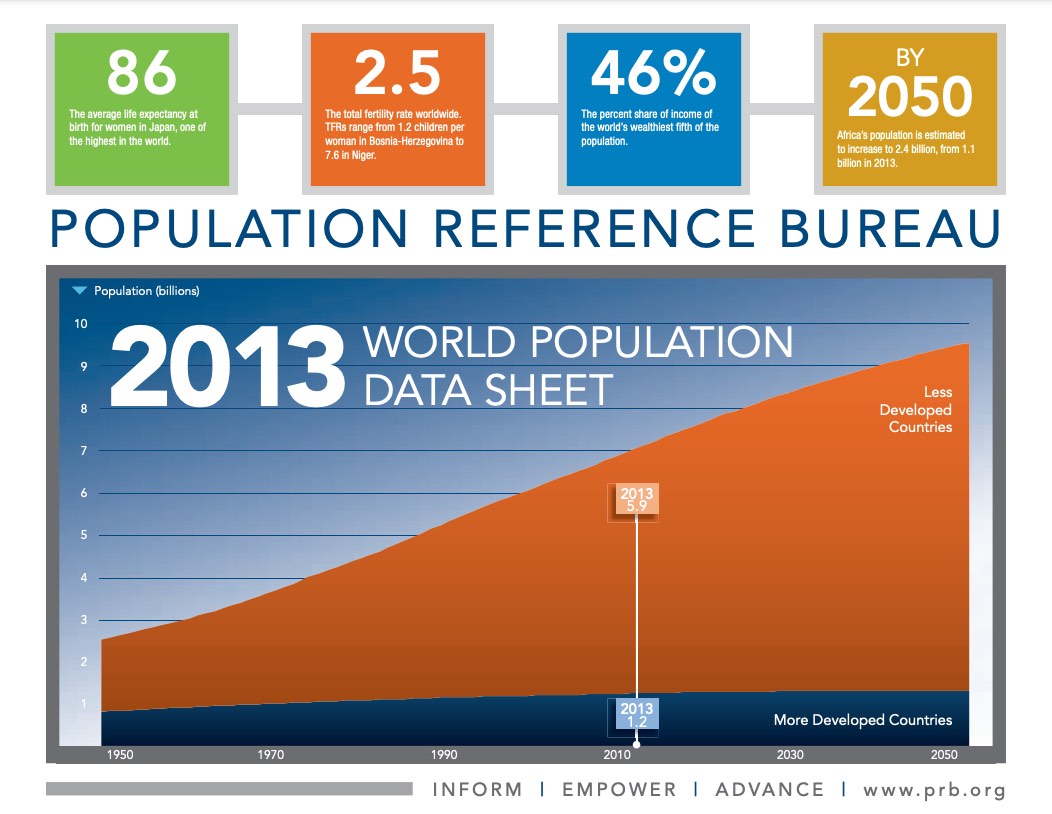 ">
">
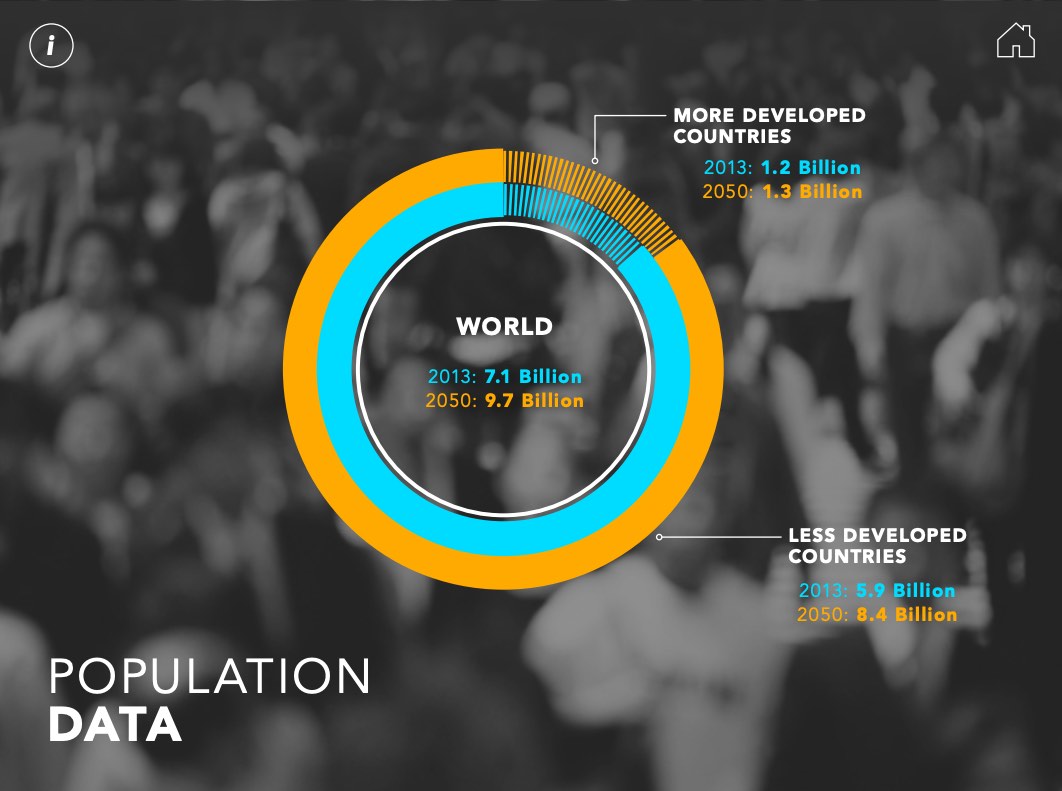 ">
">
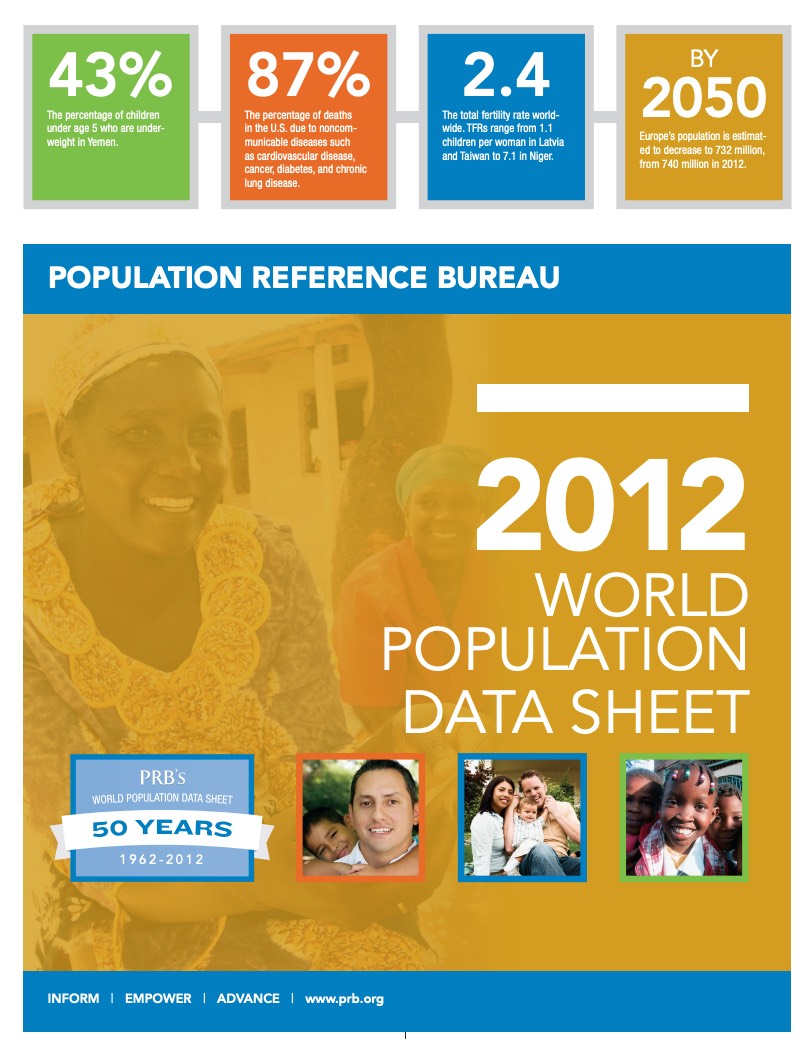 ">
">